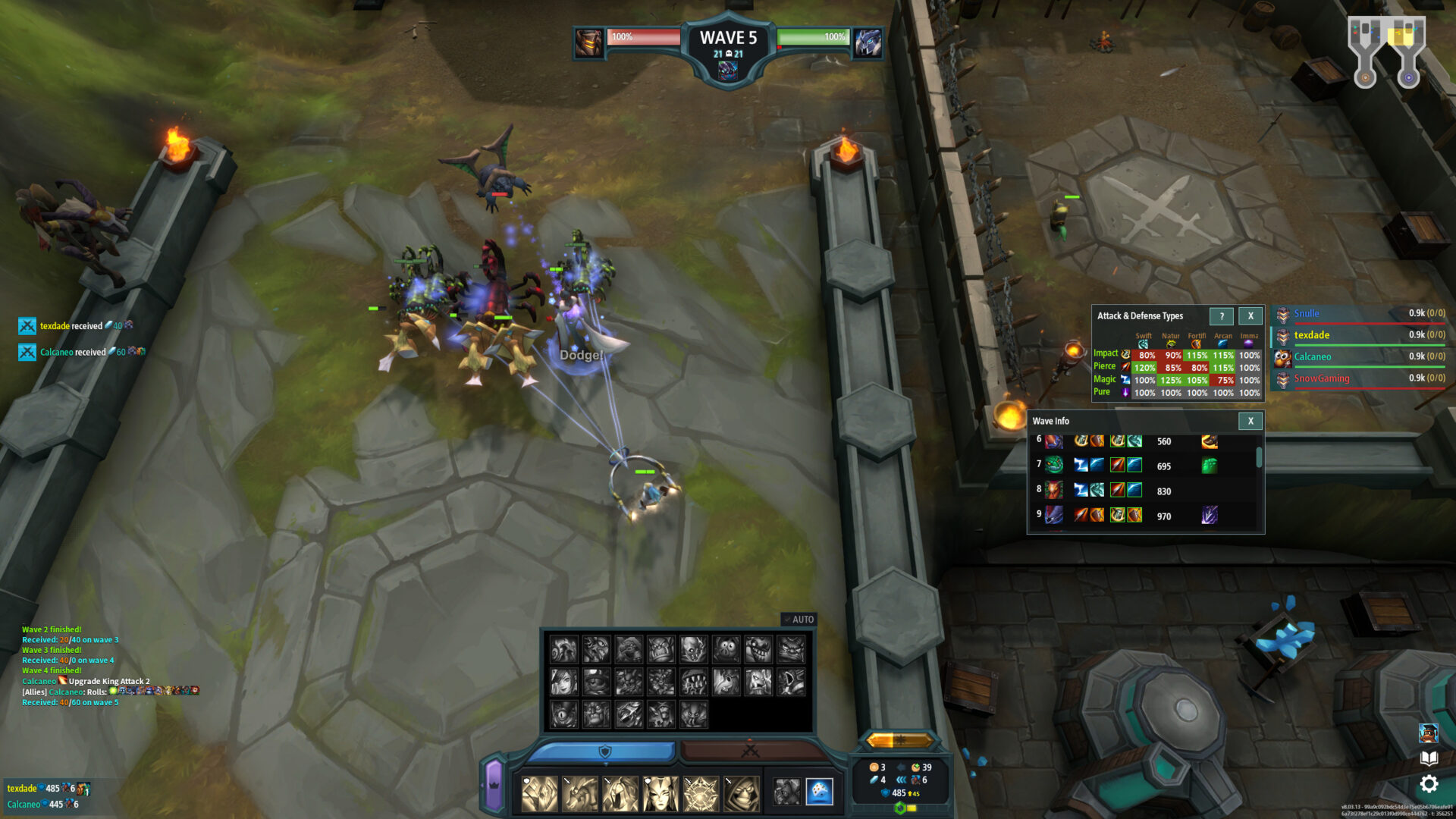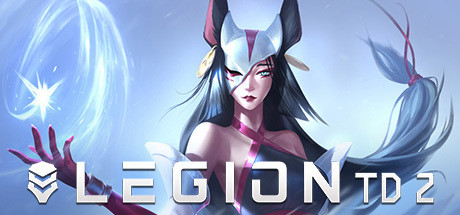The legions return straight from 2009.
Type: Multiplayer
Genre: Strategy
Developer: AutoAttack Games
Publisher: AutoAttack Games
Release date: 1 October, 2021


Overview
Legion TD 2 is a tower defense/MOBA game, coming from a Warcraft 3 mod called Legion TD that was made in 2009. Unlike many tower defense games, you won’t be recruiting turrets around a specific path that the enemies will follow. Instead, you’ll be recruiting fighters in your lane that will charge the enemy to protect your king. Oh, and you can also recruit mercenaries to attack the opponents’ lanes. And have I mentioned the fact that doing that also makes you earn more gold? Legion TD 2 is a pretty complex game, so let’s unveil it in this review.
Defend. Attack. Earn. Defend…
Legion TD 2 is one of those games where a tutorial is fundamental to start playing properly without having to do hours upon hours of trial and error: luckily the game has one that covers all aspects of the game in a bearable amount of time which, considering the amount of stuff it has to explain, is not the easiest of feats. This is a title with an extremely simple concept, that is instead very complex under the hood, thanks to its many different mechanics. The grand goal of a Legion TD 2 match is easy: protect your king and kill the enemies’ one. In order to do this, you have to hire fighters to protect your lane against increasingly harder hordes of enemies. In order to recruit them, you will use gold that is earned by killing the attacking enemies and by completing waves. Pretty easy right? This is where things get messy.

Besides defending, you can also attack your opponents. This is done by hiring mercenaries using mythium, another resource that, unlike gold, is earned in time by training miners. Mercenaries will attack one specific opponent (decided at the start of the game) and, once trained, will boost the gold you earn by completing waves for the rest of the game. This opens up a myriad of possibilities, since the game offers a lot of different mercenaries that can be used in very different scenarios: the snail is the very first mercenary you’ll hire in every game, offering basically no power but boosting your initial earnings. There are tank mercenaries, and some that give you reduced income but that are more powerful in terms of attack, hp pool or even special abilities. Basically, every match follows a loop: spend gold to train fighters, which defeat enemies and earn gold. Plus, spend gold to train miners, which earn mythium, which you can use to hire mercenaries that attack your opponent AND give you a permanent gold boost on each wave.

A common strategy is to keep spending mythium on weak mercenaries to build the economy in the early game. Then, when waves get tougher, you can start saving it to send multiple stronger mercenaries in the same wave as bosses or particularly strong enemies. This also creates a very interesting carry/support strategy, since training miners costs gold, one player can focus more on attacking, while the ally can spend more gold on fighters and protect the king.
The Teammate Leaked So I Became a Plumber
Another important concept in Legion TD 2 is leaking. This game heavily relies on coordination with your teammate(s), so much so that a slightly under-performing ally can doom your game: this is particularly true in the mastermind mode (the 2v2 ranked playlist), which at times can be very frustrating. Thus, before buying Legion TD 2, I would really think about convincing a friend to get it too. But let’s get back to leaking: we say that a lane leaks when the invaders destroy all defending forces. Your lane could leak, or your friend’s or your enemies’. The important aspect of leaking is that, if properly managed, it’s not a tragedy: the different lanes do in fact converge into a single one before getting to your team’s king. Here, all the fighters that cleared their lanes are gathered, so that they can make one last defense against the leaked waves. This opens up the strategy that I was talking about in the last chapter: one player can focus on attacking the opponent and making him leak. While he does this, he focuses less on defenses because the other teammate can catch leaks for him.

Speaking of defending and fighters, while the mercenaries roster stays the same every game, the roster of defending creatures will change every game, depending on the selected game mode: in 4v4 you get to decide which roster to pick out of 8 different legions, each one having a specific and balanced set of fighters that follow the legion’s theme. In Mastermind, Legion’s ranked mode, you will instead play 2v2 and get a randomized set of fighters, with the possibility of control that randomization at the start of the game. Again, the game opens up to very different strategies, allowing you to pick the path you think will be the best: you can either go for a full random approach and get more gold right from the start, or you could try to control the randomness and lock in a fighter and gets unit rerolls. This title offers a truly incredible amount of options, which is also why I liked it so much.
Technical Side
There’s not too much to say about Legion’s technical side: this is a competition-first title that thus doesn’t rely on incredible graphics or jaw-breaking RTX effects. The graphical models are instead made to be as light on the hardware as possible, making it a title with very simple graphics. Fighters’ models follow the same rule and have very few polygons, but most of the time you will be watching them from far away, so you won’t notice it so much.

Verdict
Legion TD 2 is an incredibly technical game: you might hate it or you might love it. All I can say is that mechanics are fresh, well-implemented and the game hardly gets boring even after hours of gameplay, due to its very competitive nature and the different line-ups at the start of each match. Just be sure to buy it with a friend: every game is funnier with a friend, but this title really shines when building strategies together.










